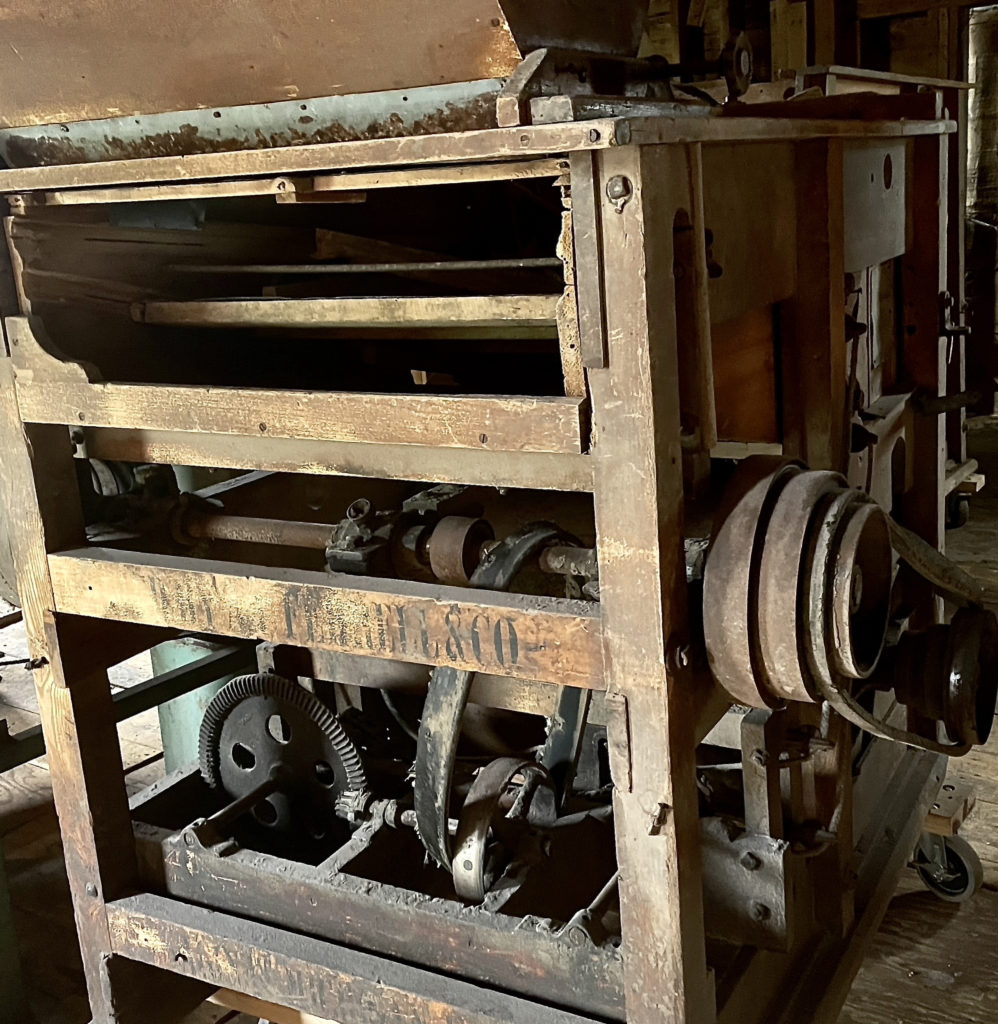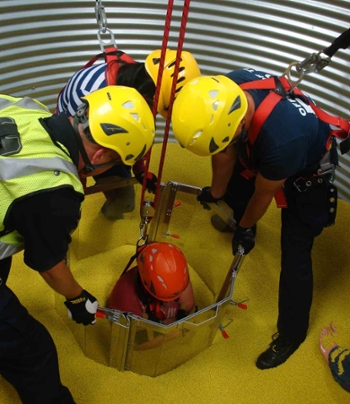Renovation is usually one of my favorite topics. It involves retrofitting old structures to make them new again. Those assignments involve me talking about and photographing old structures, something the urban explorer in me really enjoys.

The past and future stand guard at the entrance to Main Street in Harmony, Minnesota. The McMichael Grain Elevator was built in 1879 and stands on the west side of Main Street, where it meets the curve of State Highway 52. On the east side of the street is the much newer and more modern Harmony Agri-Services. A group of Harmony citizens is working to make sure the past and future of grain handling in the area watch over Main Street for many years to come.
Harmony sits smack dab in the middle of Minnesota farm country, so they needed elevators near railroads to process and store harvested grain, as well as move it into large freight cars for transportation. The A. & T. McMichael Grain Company of McGregor, Iowa, built the original elevator structure, one of several facilities they owned and operated in Minnesota, Iowa, Wisconsin, and North and South Dakota. It included the elevators in Preston, Mabel, and Canton, Minnesota.

Joel Wolsted bought the facility in 1914, and his family would hang on to it for a long time. He passed on the operation to his son, Ron Wolsted, who ran it as “Harmony Feed and Fuel.” As the new Harmony Agri-Services facility went up on the other side of the road, the old structure was gifted to the City of Harmony and the Harmony Area Historical Society by Jeff and Barb (Wolsted) Soma of Harmony Agri-Services in 2019.
Understandably, the then 140-year-old facility was in rough shape when the historical society first opened the doors. Ralph Beastrom is one of the historical society’s elevator committee chairs. With a laugh, he said the place was “full of stuff” when they looked inside it.
“We had a crew come in and clean the bins,” he recalled. “They went down inside the bins (which are long gone) and shoveled them all out. We also had a soda blaster come in and clean everything up inside the building. There were cobwebs, bird droppings, and dirt everywhere you looked in here.”

The local Falk Foundation gave the project a grant to help pay for the soda blasting. If you don’t know what that is, it’s like sandblasting, but workers use what’s essentially baking soda.
He said there are a few pieces of equipment left behind, including what are called “fanning mills” that sort the grain. Once the mills and other left-behind equipment get cleaned up, they will become part of the historical site.

“Our overall renovation plan is to work on the outside first,” Beastrom said. “We’ll do the siding and fix up the doors, so they work smoothly again. At some point, the inside will get renovated with some new lighting and some interpretive information. Whether we’ll do anything electronically, I’m not sure yet.
“We also need to get the windows taken care of, which will probably be our next high-dollar item,” he said. “Then, it’ll be time to work on the doors and close any openings that the swallows are using to get in and build their nests.”
The Harmony Historical Society is working with a preservationist in Spring Grove to do the work necessary to get the site into the Historical Registry. “We’ve already determined it’s eligible for the Registry, we just need to get the paperwork finished up,” he added. “That should be completed this year. It should open some doors for extra funding to get the renovation work done.
“Preservation architects have already told us the building is solid,” Beastrom added.
Beastrom, who also serves as Treasurer for the Harmony Historical Society, says the goal isn’t necessarily to restore it to the original condition. The goal is to preserve the building and make it look good because it “sits right at the entrance to our Main Street, and we want it to look good in that spot.”

The Harmony Historical Society will host a couple of Open House Events over July third and Fourth from 11 am-2 pm each day. They’ll have the interior on display for the public, including some of the old machines and signage as well. The Open Houses will be a kickoff to a major fundraising push for the renovation project.
“We lost an entire year to COVID-19,” he added. “Nobody could come to meetings or get any work done. We hope that the Fourth of July will really get this project going in the right direction again.”
The total cost of the renvoatioon is estimated at $200,000, so the Historical Society needs help from the public. For more information, you can contact them at hahs@harmonytel.net. Feel free to reach out to the elevator renovation chairs, including Ralph Beastrom, Richard Kiehne, or Vicky Tribon.
To make donations online, go to www.givemn.org/organization/Harmony-Area-Historical-Society, or donors can also mail a check to HAHS at P.O. Box 291, Harmony, MN, 55939.

